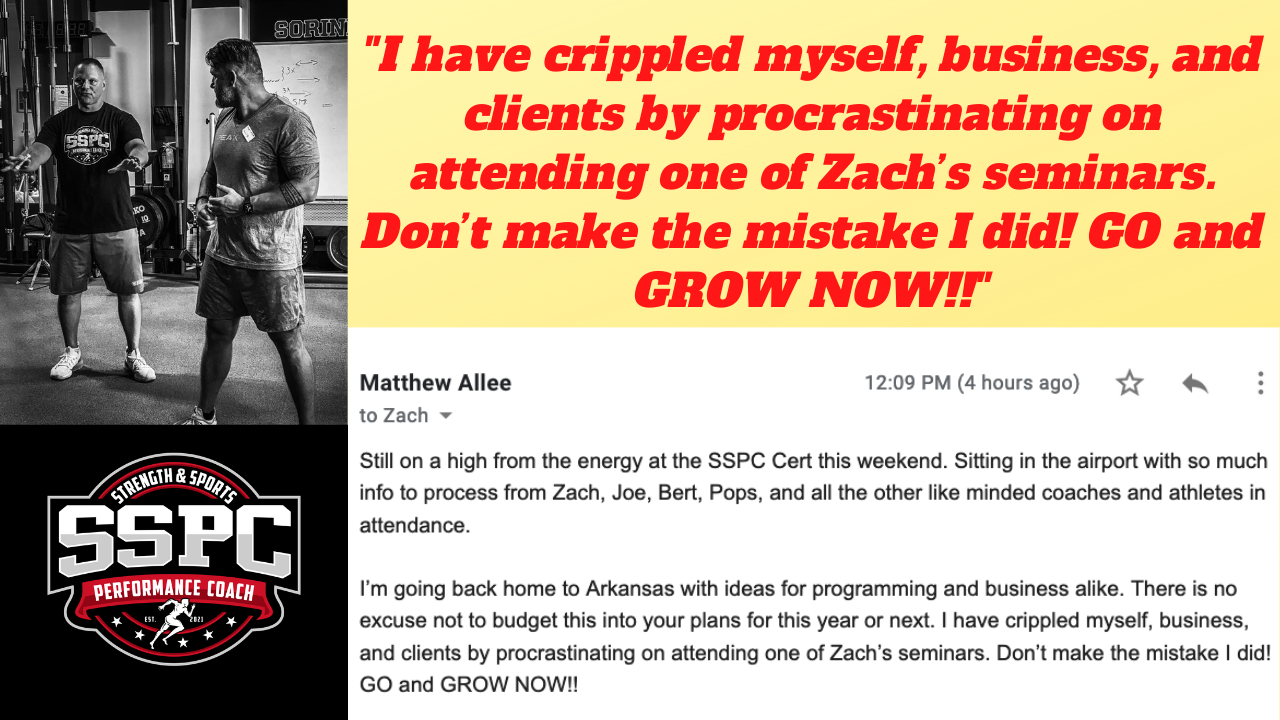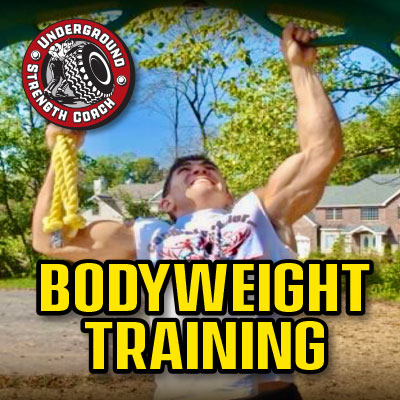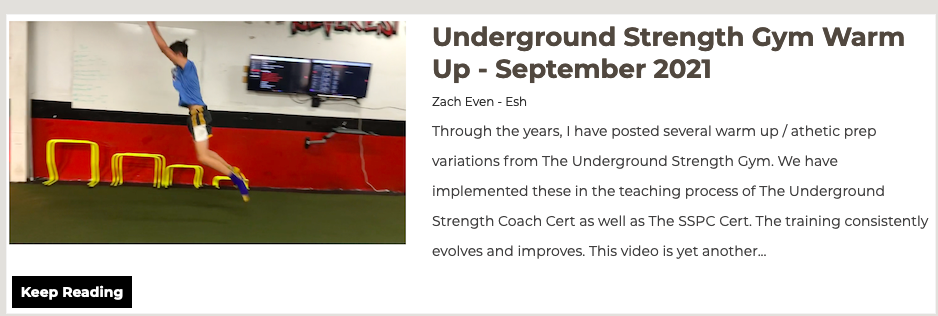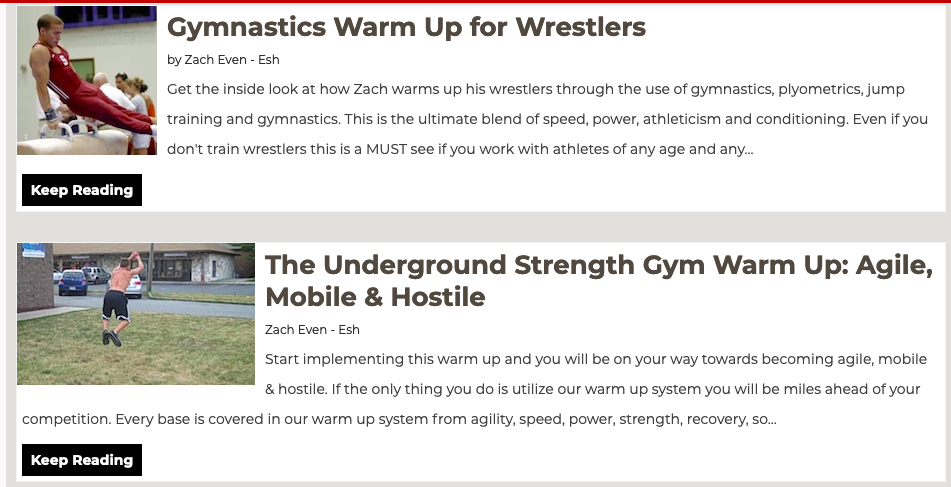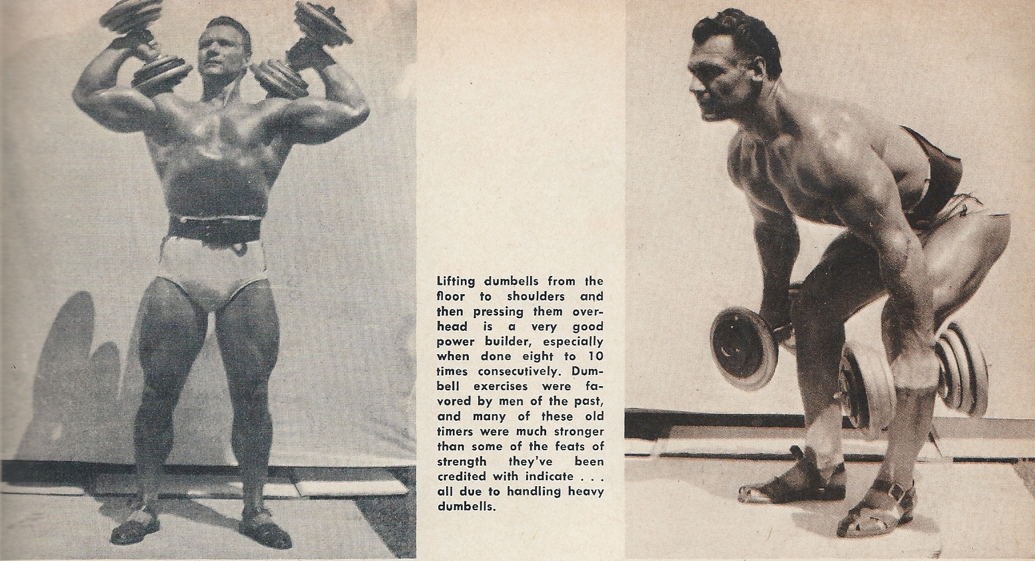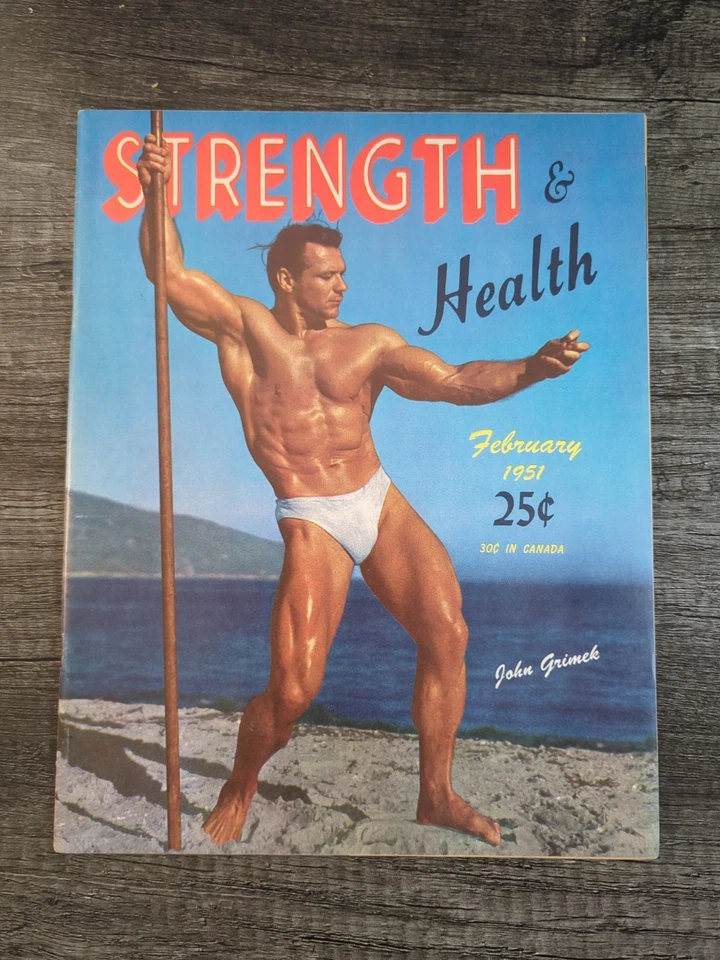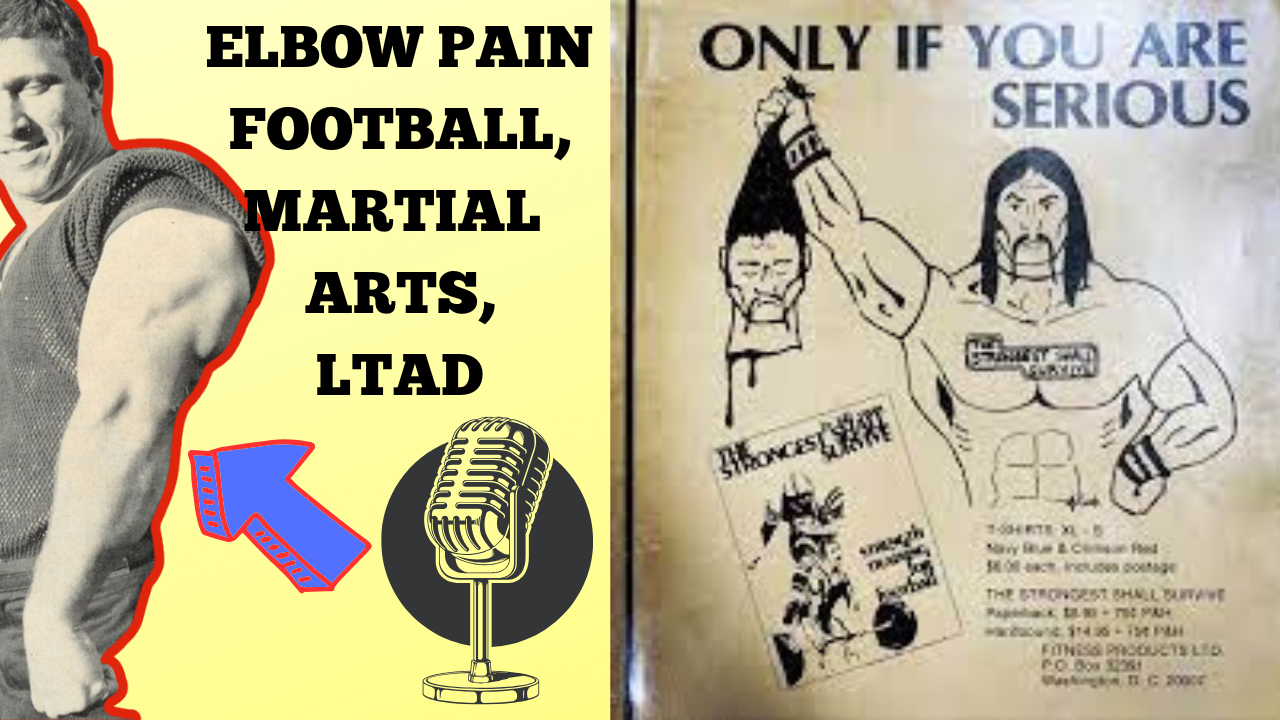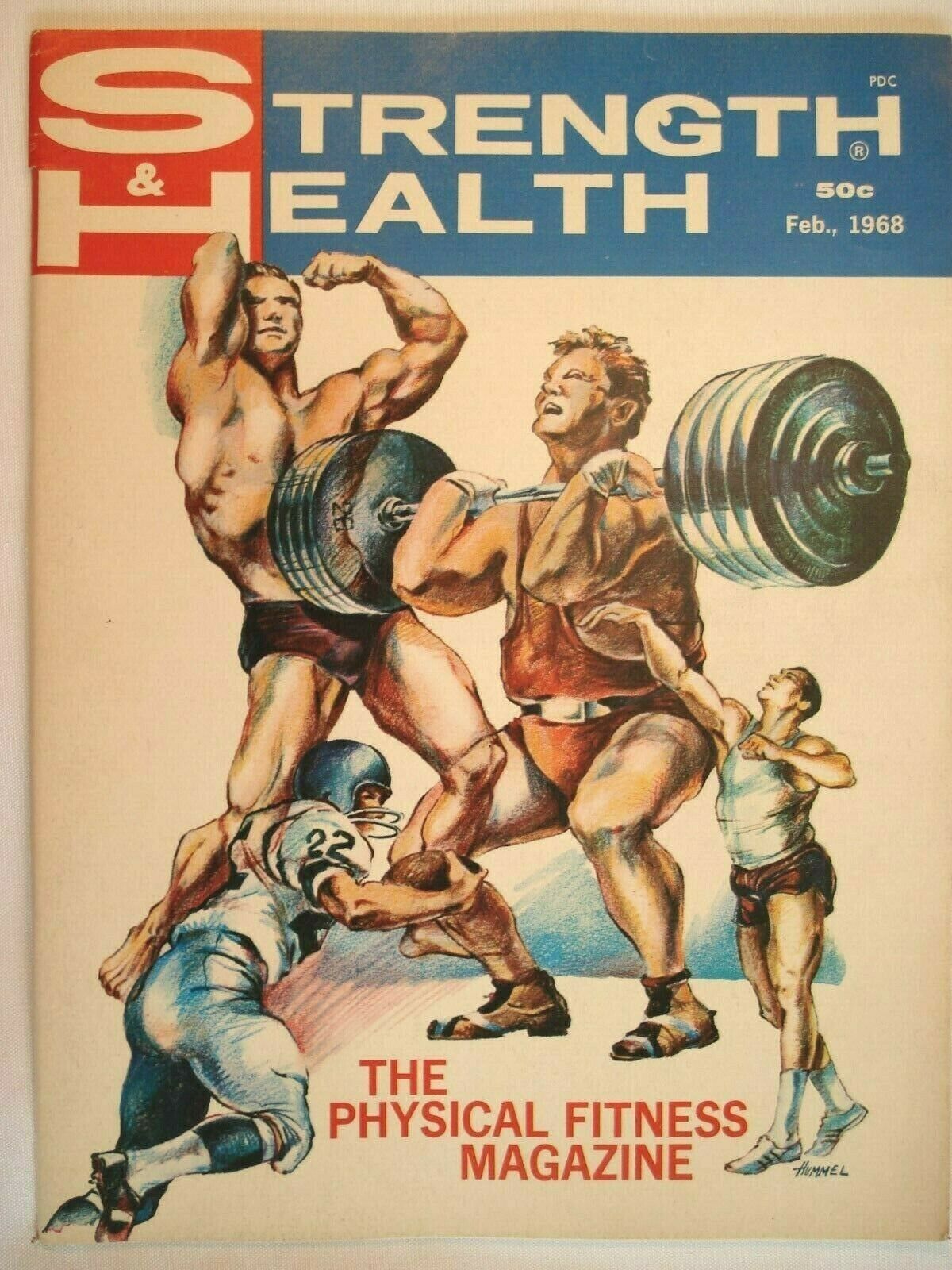
Dan John & John Welbourn speak on this topic often, and as a Coach with multiple Underground Strength Gym locations plus coaching D1 Athletes from different areas, I have experienced how 3 factors (Genetics, Geography & Opportunity) have a profound impact on the success of an athlete.
I will discuss those 3 factors below:
Genetics
This is what your parents and God gives you. I will take this a step further, if your genetics were good BUT the parents don’t understand healthy eating and you grow up on pasta and processed foods from baby years through high school, you WILL deny what your genetics can truly become.
Geography
I have lived in different areas and have seen first-hand how in some areas, the athletes are tough and in some areas, they all quit and prefer convenience over excellence.
Geography also applies to sports. Look at any Olympic sport and you’ll notice each sport tends to have 2-4 countries that dominate each sport because of where they grew up. This leads us to opportunity.
Opportunity
If there are great Coaches in your geographic location, this changes everything. Are there world class coaches at the youth level in your area or are there a few Dads who played high school ball running the show? BIG difference in how you will be coached!
Your environment will also determine how far you go. Let me explain further. Why do some towns always win the state championship in High School Football, Wrestling, Basketball, Baseball? Yet other towns always end up in the middle and the same town always has a losing record? It’s their geography and opportunity. It’s their environment.
Some towns/teams are used to winning. They are expected to win. They are trained to WIN. Other towns are used to being average or used to losing. Hence, that is their “normal”.
Your normal is not someone else’s normal. I learned that quickly when I opened up multiple locations of The Underground Strength Gym. I simply assumed each location would be like the first location. Even when only 20 minutes away from one another, the different geography changed the type of kids we trained.
In some towns, we had tough, motivated and disciplined athletes. In other towns, we had kids that were scared of the world, could not look you in the eye during the first few weeks and they ALL struggled in training.
The parents in a certain town feared everything; Is it too much to train here AND play Baseball? Is it too much to train here AND study for school? Can we ONLY train this month but not next month? Strength was not something they understood, let alone wanted or even cared for in certain areas.
In other areas, the parents were tough, had high expectations of their kids, understood and lived a blue-collar mentality, where working hard was the norm. I learned that if an athlete came from a certain town, he will likely bring a common trait as the others have shown me from that same town. There is nothing worse than experiencing the same excuses coming from the same area.
As a parent, knowing and experiencing how influential geography and opportunity are to my kids’ success in all areas of life, I pay keen attention to their coaches, their teachers, their friends, etc.
Strength is a Choice, so is weakness.
Success is a Choice, so is mediocrity.
If you’re a parent, keep your kids away from places who do not value strength or success. Those areas provide less opportunity to be around great coaches and highly motivated athletes. This can apply to academics, social life as well – not just athletics.
In one of my locations, I had to BUILD that tough culture. Man, it took a LONG time. I heard Mike O’Hearn talking about growing up training around men like Doug Furnas and Doyle Kenady. Mike was a young teen and these guys were deadlifting 800 and 900 lbs. Mike thought this was “normal”. Change your normal. Get out of the mediocre environment or it you will die a slow death traveling on the road to nowhere. My buddy Mark Bell always says, “The road to nowhere is paved with excuses.”
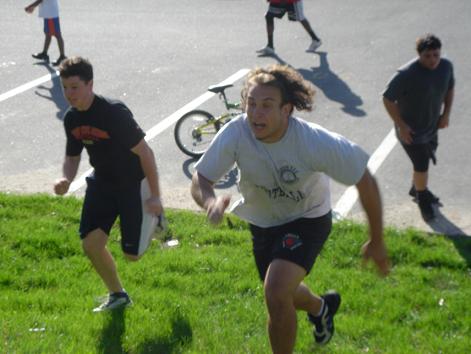
Back to The Conjugate Method:
For those of us who train regularly in sports, these four training days might not be feasible for you. The majority of athletes I train, college included, tend to get 3 x week training.
In a Day and age where sports clubs are opening and convincing parents you MUST play Lacrosse, Baseball, Basketball year-round, we see kids are not playing street ball. Kids being coached TOO much. Kids don’t know how to fix their own mistakes, how to help one another or how to get off their couch to do something on their own. They only do something when a Coach tells them to.
When I was in high school, I saw the Football team lifting Monday – Friday with the Coach. There were no speed camps. These guys just destroyed the weight room and attacked the basics. The Coach lifted with the team. He was a leader and they LOVED him and Respected him. The high school team won 2 state titles when I was there. The players were big and strong. They stuck together and took pride in working hard, playing hard and they wanted to win!
I’m selling hard work, basics, and consistency. Nobody wants to buy that. It’s so expensive it’s free!
What I’ve done with the 3x week training program, is to tweak the conjugate method. We hit speed, strength and muscle building in every session. Depending on the time of year, I make additional changes that best benefit the individual.
We have:
– In Season
– Immediate Post Season (4-6 weeks)
– Deep Off Season (No competition close by)
– Pre Season (6-8 weeks, maybe 10 weeks prior)
If you train year-round, you will ALWAYS be ready. If you skip the off-season work, your pre-season becomes an act of desperation because you are trying to GET Ready. Train Hard and Train Consistently and you ARE Always Ready! The best in season program is having a great off season program.
Look at the variation below, which becomes the concurrent method (explained in detail below):
Monday: ME & DE for upper body – choosing strength and power movements for the upper body in the same workout, finish up with reps (RE – Repeated Effort Method).
Sample Workout after thorough warm up:
1A) Swiss Bar Bench + Mini Bands 8 x 3
1B) Explosive Pull Ups 8 x 3
2A) 1 Arm DB Row 4 x 6 / 6
2B) Incline Kettlebell Bench 4 x 6
3A) Ring Push Ups 3 x 12-15
3B) Bent Over Rear Delts 3 x 15
3C) Med Ball Slams / Sledge Hammer Strikes 3 x 15
4A) BB Power Curls 2 x 8
4B) Incline DB Triceps Extensions 2 x 10-15
4C) Any Farmer Walk 2 x 200 ft.
Thursday: ME & DE for lower body – choosing strength and power movements for the lower body, finish up with reps (RE – Repeated Effort Method).
Sample lower body session after a thorough warm-up:
1A) Zercher Squat 5 x 3 – 6 reps
1B) Hurdle Jumps 5 x 3
2A) Bulgarian Split Squat (Various Loading Positions) 3 x 8 / 8
2B) Weighted Back XT 3 x 10-15
3A) Single Leg RDL 3 x 5 / 5
3B) Any Carry Variation 3 x 150 ft.
Both training sessions get abs between sets, plenty of band rehab/rehab work between sets and during warm-up, and, grip work at the end.
Arms are common as well. Giving athletes 2 – 3 sets of arm work after a tough leg day is a psychological boost for them. Arm Pump has NOTHING to do with science but if the athletes love it, believe in it and feel great, you are building them up! THAT is the key!
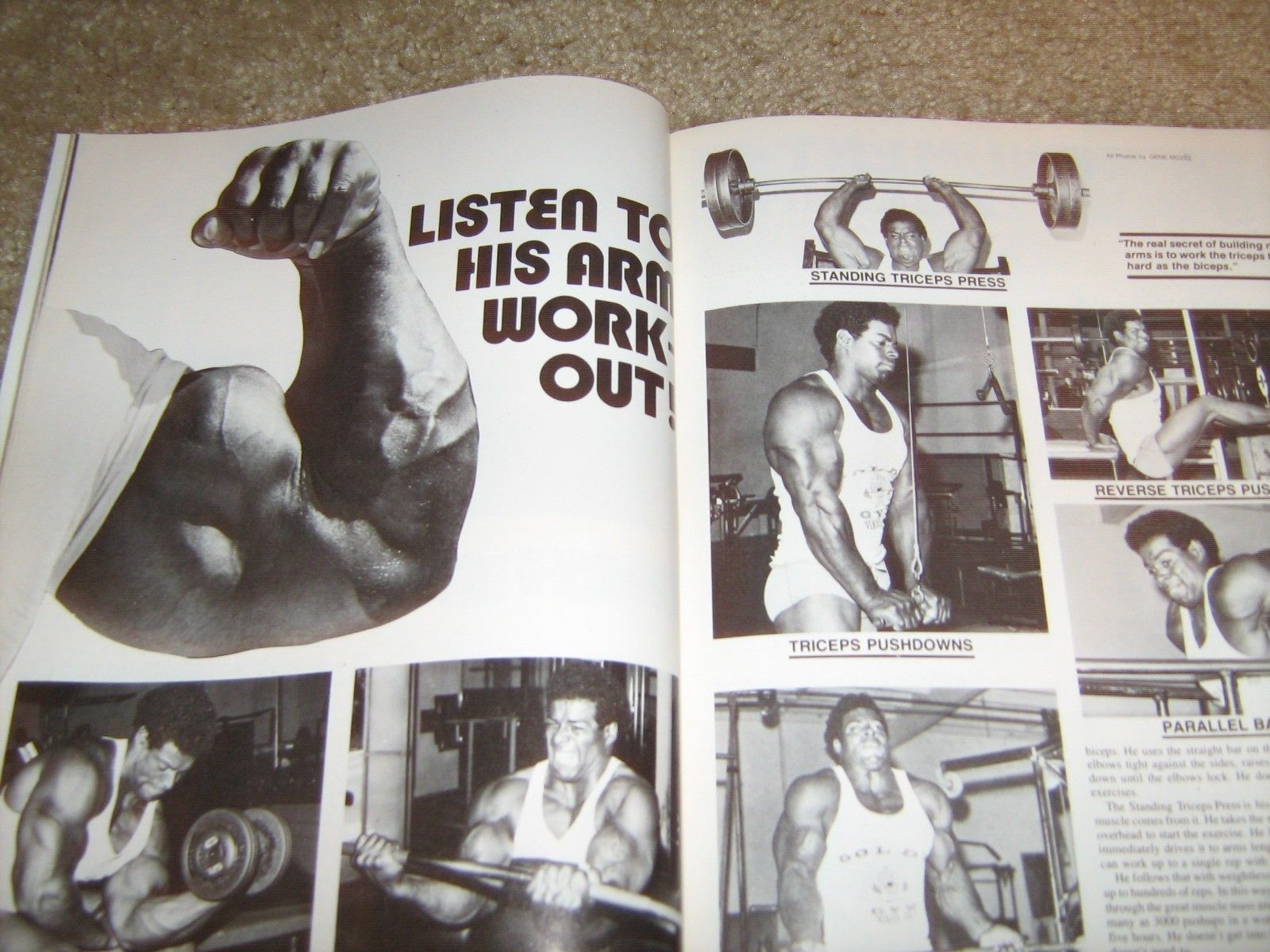
Model 3: The Concurrent System / Complex Training
The Concurrent system (workouts that I just shared above) is when various traits are blended together during each workout and through the course of a training week. These workouts are often full body workouts or upper/lower splits. You would find an athlete using methods training for strength, power and muscular endurance during the same workout/training session.
This makes great sense, as during any sporting event or job-related task (Military, LEO, etc) we need strength, speed, stamina. The benefit to Conjugate is the entire focus on strength or speed.
Before I move on, understand that EVERY program is flawed. It will never be perfect. That’s OK. Train athletes and adults to be ready for the unexpected. Life and competition are never perfect or go as planned. When it’s go time, nothing goes as planned. Being mentally and physically prepared for this gives you the advantage. This is why I train in the heat, the cold, with boots, barefoot, etc. I constantly change it up.
The concurrent model is sometimes referred to as the “Multi-lateral skill development approach”. In essence, it states that you are training various strength skills in one workout. This method was popular amongst young athletes in eastern bloc countries when Coaches were trying to develop young athletes by exposing them to numerous training qualities in order to develop them into a more complete athlete for their later years when specialization would eventually occur.
Gymnastics requires strength, power, coordination and muscular endurance. I regularly utilize gymnastics during our warm-ups because we can attack speed, explosive power, and muscular endurance in a short time period. From there, the basic exercises develop the strength and muscle building.
In Eastern Bloc countries, by the mid and late teens of an athlete, Coaches would analyze these athletes to see how, or more specifically, where they developed most, and would then place them into a sport that best suited their physical attributes.
My father was born in Romania. He told me almost monthly the boys got lined up in boxers and sports coaches pulled kids for different specialty schools. Specialty for track & field, a specialty for swimming or water polo, a specialty for wrestling or boxing, etc. The physique & talent of the athlete (genetics & talent) determined where / what the student was trained in, NOT where Mommy and Daddy insisted little Johnny play. Very different compared to America when I hear kids on my son or daughters team announcing that they are being forced to play this or that sport because Daddy makes them.
My middle school athletes always do a fun, athletic based warm up. They go through obstacles courses and don’t even realize they are “training”. Jumping over obstacles, climbing up ropes and over large boxes. Carrying various objects in a relay fashion (manual labor, like working on a farm).
I often take the athletes to a park near my gym and play Ultimate Football for 10 minutes. Sometimes, I will incorporate different tag games to work on sprints, agility, and acceleration.
Believe it or not, the town complained about this, even though we were playing at an empty park! Yes, MANY places in America view exercise and playing as a crime! This comes down to Geography. In some areas, strength is NOT admired or even understood. Hence, you have people who view playing at the park as a bad thing. If you’re a Coach out there, keep fighting the good fight. We CANNOT allow mediocrity to win.
Viewing the sample workouts I just gave above, you can still utilize the same movements, but instead of training the same traits (Heavy for strength or lighter for Speed), you might use the same movement with a focus on power (lighter weight & more speed) as opposed to your last workout which utilized that same movement for strength.
You can add more jumping for speed work and load your pushups and pull-ups to focus on strength development.
Let’s take a look at a typical full body workout utilizing the concurrent method:
1) Warm up properly
2) Full body movement (power or strength focus) 5 x 3 – 6 reps
3A) Upper body pull movement (strength or power focus) 4 x 3 – 8 reps
3B) Upper body push movement (power focus) 4 x 3 – 8 reps
4) Lower body movement (strength focus) 3 x 5 reps
5) Extra movement for posterior chain or unilateral leg movement (muscular endurance focus) 3 x 15 reps (sled/prowler work, glute ham raises, weighted Back extensions)
6) finish with core and grip work
Specific Example:
1) Gymnastics style warm up, repetition method on dumbbells & band work as a circuit, mobility / soft tissue on tight areas x 10 minutes
2) Power Clean + Hang Clean 5 x 1 + 1 (Lighter Weight for Power Development)
3A) Pause Squat 4 x 4 (2 sec. pause in bottom)
3B) Weighted Squat Jump 4 x 4 (Hold Light KB between legs)
4A) Underhand BB Row 3 x 10
4B) DB Floor Press 3 x 10 (1 sets elbows out, 1 sets palms in. 3rd set choice of arm position)
5A) Sled Sprints 3 x 100 ft
5B) Lateral Lunges 3 x 5 / 5 (Bodyweight or with light KB)
5C) KB Swings 3 x 10
The concurrent method can be performed in 2 – 3-week mini cycles. This means that for 2 – 3 weeks you are performing the same workouts, but you are trying to break a record or improve in some manner. You can change the tools used such as switching the barbell, switching DBs for KBs, etc. After 3 weeks, create a new mini cycle or do a week of lighter training to serve as a reload / deload.
The Sample Program looks like this:
Organized in a 3-week mini cycle, this works great.
Week 1: Introduce movements, establish a baseline for form. Weight is used and can also serve as a deload with slightly lower intensity.
Week 2: Always focus on technique, break records from week 1 in any of the lifts.
Week 3: Technique is the priority as always, but, try to break records from week 2. If athlete seems slightly run down on week 3, perform the exercises with lighter weights and for speed. Finish with higher reps for pump. The planned heavy lifting gets switched to dynamic effort and repetition method.
Week 4: If week 3 went as planned and the athlete or you are breaking records and hitting maximal effort, this 4th week is a deload aka reload week. You can go with Kettlebells and Calisthenics and finish with some pump-up work. 2 x 20 reps are great for the pump.
Now, here’s more “Art of Coaching” tips. Sometimes I honestly don’t feel the athletes I am training need a deload. Why? Because they do NOTHING outside of 3 lifts with us, which means 4 days a week of inactivity!
You need to be keyed in on what your athletes do when they are not in the gym. Sports training adds up. Mandatory lifting in school – what do they do at school? Take it ALL into consideration and plan accordingly. Often times, I find myself fixing the bad things being done outside of my training because kids are forced into mandatory this and mandatory that with a coach who is NOT an expert. These are some unfortunate truths.
Our new athletes go through various phases of intro and intermediate workouts before they begin training with the experienced lifters/athletes. Some athletes get strong and make progress quickly, others take a longer time to turn the corner. Their own mindset and commitment to success determine how fast they achieve results.
Their lifestyle, nutrition, obsession with getting stronger (or lack of care) – these are all factors that determine results or lack of results.
And please note, a high-level athlete does not automatically translate into a high-level lifter. I have trained BJJ Black Belts who cannot perform forward bodyweight lunges. There are Olympic level athletes who can’t keep a flat back or hip hinge with light weights, national champions who swing and kip on everything!
The weight room and overall GPP is only one piece of the puzzle towards athletic success. The most important piece of the puzzle is the sports skill itself.
Below is a sample of some Phase 1 / Intro workouts and these do not include the warm-up.
Also below, here are a few different Videos of some of our athletes warming up, check them all out and understand that warm ups should change once athletes become competent in the basic intro style warm-up:
Here’s a sample warm-up that a beginner might go through at my gym for the first 2 weeks. The 1 arm overhead carry might not happen until the 2nd or 3rd session, depending on the athlete’s strength, mobility, and athleticism.
Sleds 2 x 100 ft
Bodyweight Squats x 10
Recline Row x 10
Band Pull Apart x 10
Walking Lunges x 50 ft
Push Ups x 10
Knee Raises off Dip Bar x 5 – 10
1 Arm KB Carry 2 x 50 ft each: Suitcase, Rack, Overhead
Side Plank x 30 sec. ea. Side
Jump Rope x 1 Minute
I’ll often do a few sets of band pull aparts during the warm-up and the reps prescribed above are flexible. Why? Because MANY athletes can’t do 10 pushups, sometimes not even 5. Adjust accordingly.
Often times, the warm-up feels like a workout for a beginner. I’ll go through the above for 3 rounds with a beginner. From there, a few sets of carries and calisthenics and we are usually done for the day.
NOTES:
SM = 90% / submit reps
Phase 1 Intro / Workout 1:
1A) Partner wheelbarrow 4 x 1 lap inside the gym (approx. 50-75 ft)
1B) Pull-ups / recline rows 4 x SM reps
2A) light sandbag power clean or shouldering 4 x 2 / 2 each side
2B) push up variation 4 x SM reps
3) ab work 3 x
4) Sleds + Various Carries 3 x 150 ft
Phase 1 / Workout 2:
1A) 1 Arm KB Clean & Press x 5, 4, 3, 2, 1 each arm
1B) Recline Row / Pull Ups 5 x SM reps
2A) Walking Lunges 3 x 50 ft (Bodyweight or Light DBs)
2B) Push Up Variation 3 x 8-12 reps
2C) Band Face Pulls 3 x 10
3) Sleds / Farmer Walk / Back XT 3 X
We are often finishing training sessions with basic grip work like captains of crush or wrist roller grip work.
Phase 2:
Phase 2 is where we begin to introduce exercises that require more focus, more strength, more skill and overall are more challenging. At first, it’s all about technique. Don’t worry about the weight. Focus on slow and steady progress. When the technique is great, then we add weight.
I don’t get too carried with variety during Phase 2, however, I will adjust and vary the sets, reps, maybe the angle of the bench, etc.
This is how we get our athletes strong in a very fast manner: Attack the basics and focus on technique. I don’t dive into spending excess time on power cleans to a new athlete who can’t do a pull-up or a proper bodyweight squat. Build that base before you even think about teaching a complex movement.
Phase 2 begins when the athletes demonstrate regular progression and very good technique in all movements. We don’t need absolute perfection, but we want things looking tight. This can take 2 weeks or it can take a few months depending on the athlete’s dedication, desire, mindset and of course what they do outside of the gym.
Sometimes, you just gotta get fired UP! For example, I was training a 9th-grade Football Player who struggled with pushups since day 1 and just did NOT get better through the months. Once in a blue moon, you get these kids who make ZERO progress, same goes for adults. You need to get 1 on 1 with this person and tell them straight, this is what it takes and you’re either in or you’re in the way, as Mark Bell says.
No one needs a Coach to get better at basic calisthenics. If you’re not getting better at pushups, it means the following problems are an issue:
Poor Nutrition/Excess Junk Food/Lots of Processed Junk
NOT Doing Extra on your own. Everyone should do something on their own. Some calisthenics, some walking or sprinting, etc. Athletes who are motivated will do pushups every day. Don’t even try mentioning the word overtraining because someone is doing pushups every day.
NOT obsessed.
I’ve watched athletes train side by side for years and achieve completely different results. One athlete is obsessed and the other is just happy to be there. If you don’t care about getting strong then your body and mind will NOT connect. Your results will be mediocre, at best!
When I have a Squat session on Monday I am already thinking about it Friday evening! I’ve played the movie in my mind. I’ve imagined the weights, heard the plates clanging, visualized myself breaking a PR while listening to some loud music.
Whatever area of your life you want to succeed in, you MUST visualize!
Phase 2 Sample Workouts:
Day 1
1A) Trap Bar Deadlift 5 x 3 – 5 reps
1B) Squat Jumps 5 x 5
2A) Flat DB Bench 5 x 5
2B) Pull Ups / Recline Row 5 x SM reps
3A) Weighted Walking Lunges 2 x 50 ft
3B) Chain Push Ups 2 x Max
4) 3 Rounds:
A) Sleds x 150 ft
B) Any Farmer Walk Variation 3 x 150 ft
C) Back XT 3 x 10-15
Day 2
1) KB Goblet Squat x 10, 8, 6, 4, 2
2A) Sandbag / Ball Shouldering 4 x 2 / 2 each side
2B) DB Floor Press 4 x 8
3A) Bulgarian Split Squat 3 x 6 / 6
3B) Any Carry 3 x 100 ft
4A) DB Hammer Curls 3 x 8
4B) Band Triceps 3 x MAX (15-25 reps)
5) 400 Mtr Run
6) Grip + Abs 3 – 4 x each
Day 3
1A) 1 Arm DB Clean & Press x 5, 4, 3, 2, 1
1B) Squat Jumps x 5, 4, 3, 2, 1
2A) Sandbag Squat 4 x 6
2B) Incline DB Bench 4 x 6
3A) Double KB Rack Walk 3 x 100 ft
3B) Recline Row 3 x Max
4A) Sleds 3 x 100 ft
4B) Curls 3 x 8-12
NOTES:
I’ve trained several thousand athletes through the years. Some of these Phase 2 / Intermediate workouts will look different, all depending on the athlete’s age, body structure, coordination.
A middle school athlete who has wrestled since he was 6 years old will be climbing rope and throwing med balls. An adult who hasn’t trained for a while will often time do some basic bodybuilding, basic carries and lots of band work for shoulders and arms.
Take this information and THINK about it. Then, apply it. Do not blindly follow my words or anyone else’s words.
In addition to the phase 1 and 2 work listed, ALL athletes perform 100 band pull-aparts every workout. The first 2 weeks might only be a few sets of 10 reps sprinkled into the workout. But, after 2 or 3 weeks, most athletes can do a few sets of 15 – 20 reps, usually switching from overhand to underhand band pull-aparts.
Once pull-aparts look solid, we also add band face pulls. My experienced lifters in high school, college & adult will add more rear delt work like chest supported rear delts or band front raise + pull-aparts.
Ab work is also sprinkled into each training session, often times 6 sets by the end of the training session. Hanging from a bar or rings (Dead Hang) to distract the shoulders, decompress the spine and stretch the lats, has also been a great “rest” between working sets.
Side Planks, Alternate Shoulder Touches, all types of leg raise variations, Russian twists, med ball throws against the wall (rotational & overhead). The variations go on and on, they are limited by your imagination and only sometimes your equipment.
Joe Kenn, aka BIG House, does a lot of “resets” between his big lifts with his athletes he told me. Ab work, band work, mobility work and more. These “active rest” exercises keep athletes focused. Sometimes too much downtime inspires the athletes to talk more instead of focusing.
House will add these resets during the warm-up and in between sets of big lifts. The posterior chain is often weak on the majority of athletes and adults. Too much beach muscle focus and not enough focus on training the right way leads to this weak posterior chain.
Basically, every muscle an athlete can’t see in the mirror tends to be weak. This is why I do a lot of back extensions, walking lunges, band pull-aparts, recline rows and pull-ups.
Once Phase 2 barbell work looks good (front squats, sandbag squats, goblet squats, various KB squats), we begin to back squat (Box Squat, Zercher Squat and Regular Squat). This usually happens in high school or late 8th grade for our experienced middle school athletes who have a lot of training experience with us.
I have learned through experience with so many athletes that the human body is ever changing and so we cannot always, every single workout, improve without fail. In fact, every few years I feel like I see a decline in the strength of athletes showing up. They keep showing up weaker and weaker. I am absolutely confused with how a high school or middle school kid can’t do 10 pushups? As a Phys Ed Teacher myself, that tells me the PE teachers are NOT doing their job and kids are not exercising on their own.
The weak athletes need the basics. They can handle the frequency of daily calisthenics, sleds and band work because their intensity is NOT that high. Remember, common sense goes a LONG way in training, don’t over think everything. Encourage your young, weak athletes to do calisthenics every day, on their own.
For the more advanced athlete, there are many ways to map out a training program. At The Underground Strength Gym, it is difficult to map out a long-term plan. Athletes come and go. Some stay for MANY years, others pull out as soon as their sports season starts and never train in season, which is a BIG mistake.
Common Sense Question: Does it make sense to train all year to get better for the season, and when the season starts, you stop training? After 2 weeks of no strength work, your body gets weaker. Imagine how much strength is lost by the END of the season (8-10 weeks of NO strength work) when the most important competitions are happening.
At The Underground Strength Gym, I map out a 2-3 week mini cycle, similar to the Conjugate method, and then I auto regulate. There is a general plan for the group but then each workout, training gets individualized. It depends on the sport, athlete training experience, deep off-season, pre-season, in season, immediate post-season, etc.
Your body can quickly adapt to movements and methods. Even more so, the mind gets bored of the same ol’ same ol’. Switching the set – rep parameters will keep the body off guard and can keep progress flowing. Having a long list of exercise variations is crucial as well.
You can switch the order of movements by performing the full body movement last in the workout, as opposed to first. Or, you can perform the lower body movement first, instead of last. Change is a good thing, but too much change can make it very difficult to track progress or to allow the body to elicit a response to the training stimuli.
Sample Week at The Underground Strength Gym
Monday: Lower Body Focus
Wednesday: Upper Body Focus
Friday: MAX OUT Friday (Full Body)
Saturday: Full Body
We get in an athletic based warm up with movement prep. Followed by some light calisthenics, dumbbells, kettlebells, sleds, and bands. These high rep warmups prep the body AND mind.
Several Videos of our warm up are inside The Underground Strength Academy and of course outlined inside The USC Certification.
On Day 1 our Lower Body Focused Day, with a lower body focus, we still might sneak in some upper body work with 1 exercise, depending on the athlete and what he/she needs.
Sample Workout:
1A) Pause Squat 5 x 3 (2 sec. pause in bottom) (2 warm-ups, 3 working sets at 70-80%)
1B) Hurdle Jumps 5 x 3
2A) Step Ups + Knee Raise (Varied Loading – Hold DBs at sides, Sandbag, Double KBs Racked) 3 x 8 / 8
2B) Varied Carries 3 x 150 ft (Keg, Sandbag, DBs, KBs)
3A) Sleds 3 x 150 ft
3B) Back XT 3 x 15
3C) Recline Row 3 x MAX
On Day 2 our Upper Body Day, but we still get in some sled work. We mix up how we use the sleds. Heavy, Medium, Light with sprints, and varying distances as well.
Sample Workout:
1A) Swiss Bar Bench Press + 1 Chain Ea. Side 8 x 3
1B) ANY Band Pull (Face Pull, Pull Apart, etc) 8 x 10-15
2A) Med Ball Cross Over Push Ups 4 x 4 / 4 ea side
2B) 1 Arm Row 4 x 8 / 8
3A) 1 Arm KB Clean & Press 3 x 3 / 3
3B) ANY Bodyweight Pull (Rope Climb, Pull-Ups, etc) 3 x MAX
4A) Any Carry 3 x 150 ft
4B) BB / DB Tricep Extensions 3 x 15
4C) ANY Curls 3 x 6-12
5) Grip / Abs 4 x
Day 3 is MAX OUT FRIDAY
I picked up this idea from Travis Mash and I believe he picked it up from other Weightlifters. Even though we are not weightlifters, it allows us to make an event out of Friday which tends to be a slower day for us because athletes often compete on Fridays and Saturdays.
This is a full body day with heavy barbell lifts. I try to focus on no more than 2 barbell lifts but sometimes the heavy lift might be a dumbbell / kettlebell clean and press ladder.
I’ll line-up a bunch of dumbbells from 30 lbs all the way up to 130 lbs. The athlete will do 1 rep each arm and make a 10-20 lb jump until he hits his Max 1 Arm Clean & Press.
Here’s a Recent Sample MAX OUT FRIDAY.
1A) BB High Pull + Hang Snatch 6 x 1 + 1
1B) Box Jumps / Hurdle Jumps 6 x 2
2A) Wide Stance Box Squat 4 x 4
2B) Weighted Pull-Ups 4 x 4
4 Rounds Finisher:
A) Reverse Lunges x 5/5
B) Hanging Leg Raise x 10
C) Glute Ham Raise/Back XT x 10
D) Overhead KB/BB Walk x 100 ft.
Day 4 is Our Saturday Morning and also Full Body. I tend to make this a unilateral day with some bodybuilding work but not always. When I look back at the week’s training, I will use Saturday to fill in any gaps we didn’t have time to get to.
Remember, every training session and training plan is flawed. You never get it all done perfectly. This is why the key is being flexible. I might have a plan but after seeing the athletes warming up, I change that plan. I might feel they need a different stimulus physically and/or mentally.
Here’s a recent sample from a Saturday training session:
1A) Sandball Shoulder + Squat 5 x 2 / 2 (Some Athletes did Back Squats this day for 5 x 4)
1B) ANY Bodyweight Pull (Weighted Pulls, Rope Climbs, Pull-Ups w Various Grips, etc)
2A) BB Military Press (Middle School performed double KB Clean & Press) 4 x 3-6
2B) Various Push Ups (Weighted, Med Ball CrossOver, Feel elevated) 4 x SM reps
2C) Band Pull Aparts 4 x 10 / 10 (overhand / underhand)
3A) Sleds 3 x 150 ft
3B) KB Swings 3 x 10
3C) Arms: Band Triceps + DB Curls 3 x High Reps
You've read and seen MANY workouts listed above. The aspect of each training session which I feel is extremely crucial is the prep / warm up. Our prep is when we perform movement prep and then segue into various jumps, sprint drills and hurdle drills.
It is this type of training that develops athleticism. Otherwise, you are building strong and powerful athletes who will struggle to perform in sport at the highest levels.
Resources for Coaches:
The Underground Strength Coach Cert

The SSPC Cert
